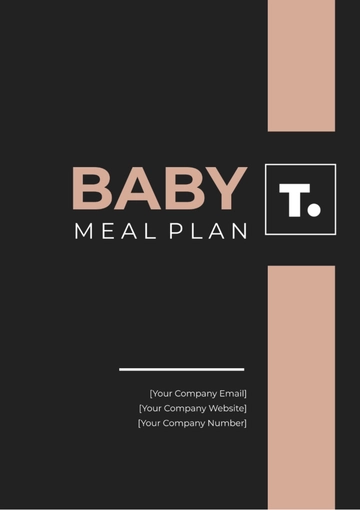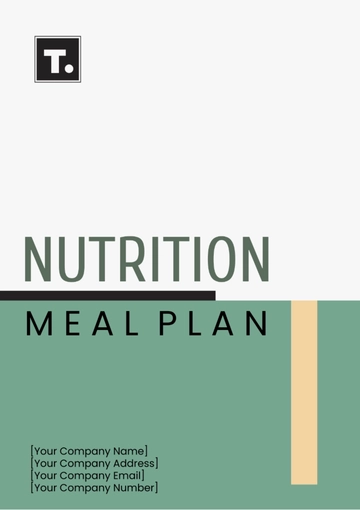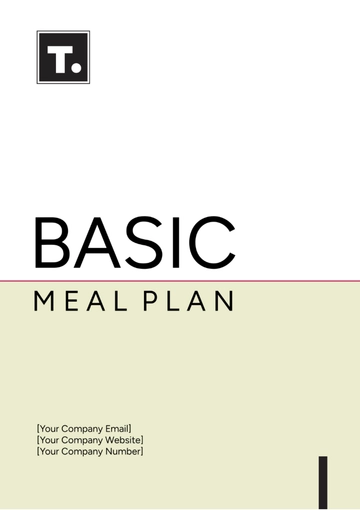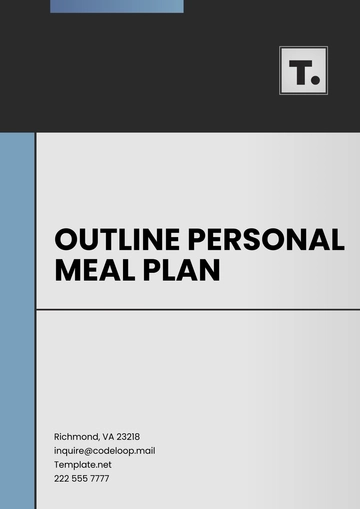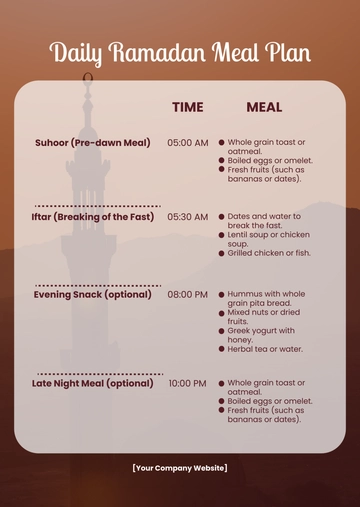Free Diabetes Meal Plan

Prepared by: [Your Name]
I. Introduction
This structured Diabetes Meal Plan is designed to help you manage your blood sugar levels while enjoying delicious and nutritious meals. This plan focuses on balanced meals with controlled carbohydrate intake, healthy fats, and lean proteins to promote stable blood sugar levels throughout the day.
II. Meal Goals
Carbohydrate Control: Each meal contains a moderate amount of carbohydrates to prevent spikes in blood sugar levels. We emphasize whole grains, fruits, and vegetables for their fiber content, which helps regulate blood sugar.
Portion Management: Portion sizes are controlled to prevent overeating and maintain a healthy weight, which is essential for diabetes management.
Healthy Fats: We include sources of healthy fats such as nuts, seeds, avocado, and olive oil to provide satiety and support heart health.
Lean Proteins: Lean proteins such as poultry, fish, tofu, and legumes are included to help stabilize blood sugar levels and promote muscle health.
Consistency: Consistency in meal timing and content is crucial for managing blood sugar levels. Aim to eat meals and snacks at regular intervals throughout the day.
III. Sample 5-Day Meal Plan
Day | Meal | Food Items |
|---|---|---|
Day 1 | Breakfast | Oatmeal with berries and almonds |
Lunch | Grilled chicken salad with mixed vegetables | |
Dinner | Baked salmon with quinoa and roasted asparagus | |
Day 2 | Breakfast | Scrambled eggs with spinach and whole wheat toast |
Lunch | Turkey and avocado wrap with lettuce and tomato | |
Dinner | Stir-fried tofu with broccoli and brown rice | |
Day 3 | Breakfast | Whole grain cereal with milk and sliced banana |
Lunch | Lentil soup with whole grain roll | |
Dinner | Grilled shrimp skewers with quinoa and roasted zucchini | |
Day 4 | Breakfast | Whole wheat pancakes with sugar-free syrup and berries |
Lunch | Spinach and feta stuffed chicken breast with quinoa | |
Dinner | Baked cod with roasted sweet potatoes and green beans | |
Day 5 | Breakfast | Vegetable omelet with whole grain toast |
Lunch | Grilled vegetable and chickpea salad | |
Dinner | Turkey meatballs with marinara sauce and zucchini noodles |
IV. Shopping List
Oats
Berries (e.g., strawberries, blueberries)
Almonds
Greek yogurt (unsweetened)
Cucumber
Chicken breast
Mixed salad greens
Assorted vegetables (e.g., bell peppers, tomatoes, carrots)
Hummus
Quinoa
Salmon fillets
Asparagus
Apples
Almond butter
V. Nutritional Guide for Diabetics
Carbohydrates: Monitor carbohydrate intake to manage blood sugar levels effectively. Choose complex carbohydrates such as whole grains, fruits, vegetables, and legumes, which are high in fiber and cause a slower rise in blood sugar compared to refined carbohydrates.
Portion Control: Pay attention to portion sizes to prevent overeating and manage calorie intake. Use measuring cups, spoons, or food scales to ensure accuracy, especially for carbohydrate-rich foods like grains, fruits, and starchy vegetables.
Glycemic Index (GI): Consider the glycemic index of foods, which indicates how quickly they raise blood sugar levels. Favor foods with a low to moderate GI, such as whole grains, non-starchy vegetables, legumes, and lean proteins, to minimize blood sugar fluctuations.
Healthy Fats: Include sources of healthy fats in your diet, such as nuts, seeds, avocado, and olive oil. These fats help improve insulin sensitivity and promote heart health. However, be mindful of portion sizes to control calorie intake.
Meal Timing: Maintain regular meal times and spacing between meals to prevent large fluctuations in blood sugar levels. Aim for three balanced meals per day, with snacks if needed, and avoid skipping meals.
Monitoring Blood Sugar: Monitor your blood sugar levels regularly as advised by your healthcare provider. Keep track of how different foods and meals affect your blood sugar levels and adjust your diet accordingly.
VI. Conclusion
With this Diabetes Meal Plan, you can enjoy balanced and delicious meals while effectively managing your blood sugar levels. Remember to monitor your carbohydrate intake, portion sizes, and meal timing to maintain stable blood sugar levels throughout the day. Incorporate regular physical activity and consult with a healthcare professional or registered dietitian for personalized guidance on diabetes management.
- 100% Customizable, free editor
- Access 1 Million+ Templates, photo’s & graphics
- Download or share as a template
- Click and replace photos, graphics, text, backgrounds
- Resize, crop, AI write & more
- Access advanced editor
Manage your diabetes with ease using this structured and practical Diabetes Meal Plan Template, offered by Template.net. Tailored to help stabilize blood sugar levels, it's customizable to suit your dietary requirements. Download and print for convenient reference throughout your day. Editable in our AI Editor Tool, it empowers you to take control of your health.





